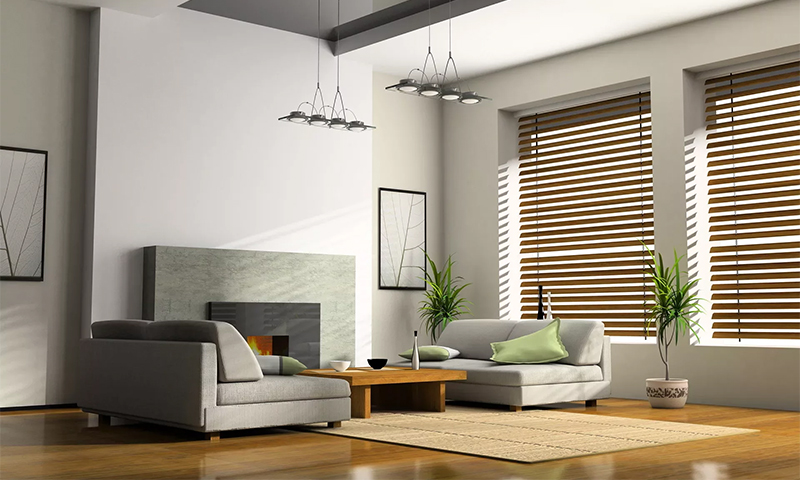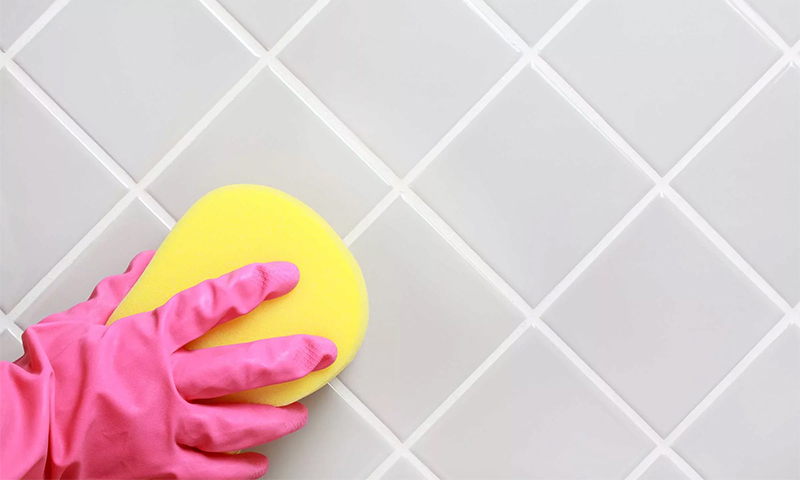Finishing the kitchen wallpaper is still not popular, because many are looking for materials for a “brewhouse” more practical. In fact, today you can find many types of wallpaper that are not afraid of water and fat droplets, do not absorb odors and completely allow cleaning with brushes and household chemicals. This finish feels great in the kitchen, allowing you to create a truly cozy and stylish interiors.

Content:
The best wallpaper manufacturers - which company to choose
The best wallpapers for the kitchen - beautiful and waterproof - are produced by German companies:
- Rasch;
- Marburg;
- AS Creation.
Interesting collections offer Belgians (Grandeco), Americans (York) and Shinhan from South Korea.
Among domestic producers, the following brands should be highlighted:
- Elysium;
- Palette;
- "Slavic wallpaper";
- MOF.
On the pages of our online magazine you will find a rating of the best wallpapers from these and other well-known manufacturers. But do not forget that the choice of kitchen decoration needs an individual approach.
Types of wallpapers that are suitable for the kitchen
Vinyl
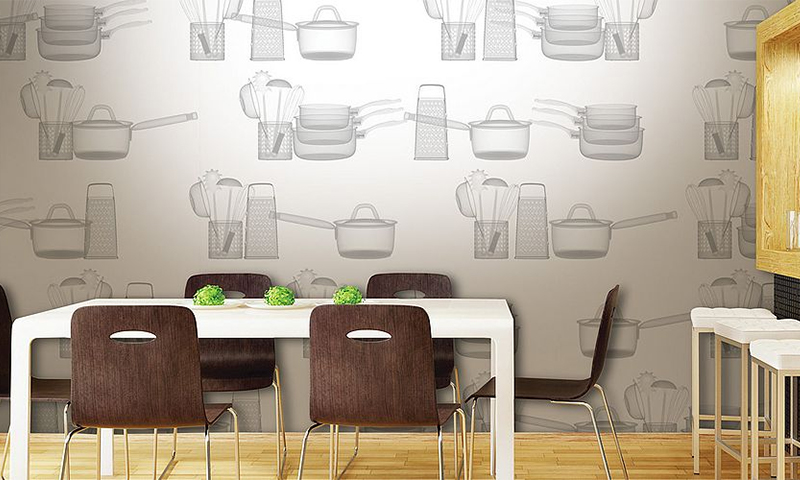
Quite a large family of finishing materials, which differ from each other only in the characteristics of the upper layer. Thus, the internal classification highlights the wallpaper from compact vinyl, solid, foamed and moisture-resistant PVC.
For gluing in the kitchen, all these options are suitable, except for too soft textured foam vinyl. The remaining species differ much more wear resistance and are not afraid of excessive moisture.
Pros:
- Easy to stick and do not crawl in the hands;
- Allow to hide minor irregularities of the base;
- Allow wet cleaning;
- Do not absorb food odors;
- The service life in the kitchen reaches 8-10 years.
Minuses:
- Low, and sometimes even zero air permeability, which can cause mold under the wallpaper (only solid vinyl with micropores is devoid of this disadvantage).
Glass fiber
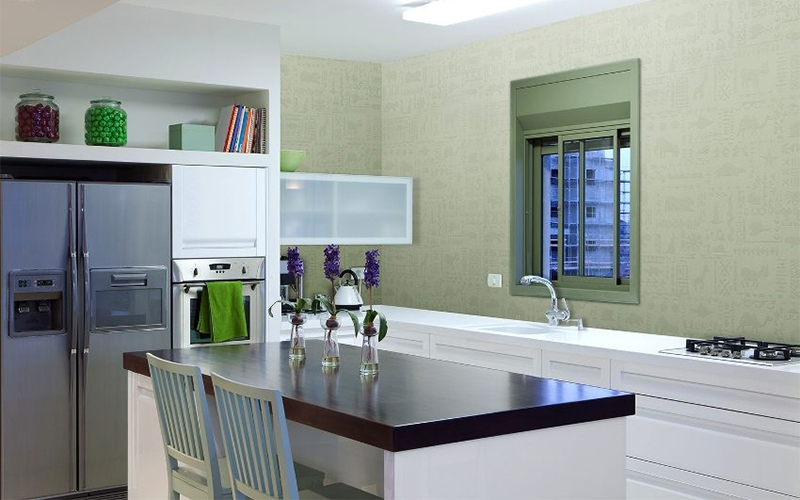
Textured fiberglass painted wallpapers are perfect for the kitchen. They are easy to care for, as fiberglass calmly transfers washing and even tough cleaning. And if it was not possible to get rid of some stains or you want to make a small redesign, you can simply repaint the walls in a different color.
As a rule, such "canvases" are produced in the format of 1x50 m and require a certain skill at sticking, but their durability justifies any inconvenience.
Pros:
- Durability is twice higher, than at vinyl;
- Easy carry wet cleaning and cleaning;
- Easy restoration due to the ability to repaint wallpaper several times;
- Fire resistance;
- Not bad strengthen weak plaster, preventing its cracking;
- Long service life (up to 30 years).
Minuses:
- When cutting, allergic fiberglass dust is released, causing coughing and itching.
- Not the richest selection of patterns.
Flizelinovye

Real non-woven wallpapers are a cross between paper trellis and fiberglass. They are made of cellulose with the addition of polyester and various impregnations that make the paper dense and elastic at the same time - it will be difficult to tear such.
A similar finish is available both with printed print and for painting, but, unlike glass-slabs, it may not have a pronounced relief. But with its help it is easy to get a smooth surface of the walls, if the quality of the base leaves much to be desired.
Pros:
- High tear resistance;
- The canvases work well, even if you have strongly crushed wallpaper when transporting or cutting;
- Hypoallergenic;
- Air permeability;
- Good fire resistance;
- Easy to clean due to antistatic properties.
Minuses:
- Very high cost.
Kitchen wallpaper selection options

Peculiarities of care
It is clear that the kitchen needs hygienic wallpaper, which will be easy to care for. But exactly how it depends on their level of resistance to water, household chemicals and abrasives.
The pictograms on the label will help determine the appropriate material:
1. Moisture-resistant wallpaper (indicated by a single wavy line) - you can only occasionally wipe with a slightly damp sponge, but for a long time they will not withstand such treatment.
2. Washable (two "waves") - allow simple washing without the use of chemicals.
3. Super-washable (three “waves”) - you can even wash off grease stains and fruit juice, using, for example, dishwashing liquid.
4. Wear-resistant (wavy line with a brush painted under it) - allow the use of brushes with a soft bristle.
5. Especially resistant (three "waves" and a brush) - you can rub, wash and clean using household chemicals.
Lightfastness
You should pay attention to it if you have large windows facing the south in the kitchen. The lighter the room and the stronger the effect on the decoration of the sun's rays, the higher their light resistance should be. You can also determine it by the pictures on the insert.
1. The most resistant to fading wallpaper are indicated by two suns on the icon.
2. A little weaker in this regard will be materials marked by one sun with the inside sign “+” or without it.
For rooms with access to the north side or permanently in the shade, a trellis with satisfactory light resistance is enough - it is indicated by half of the sun, inside which a plus sign can also be drawn.
Texture (for wallpaper for painting)
Manufacturers can promise as much as they want that wallpapers for painting serve forever. In fact, it all depends on the height of the relief pattern, because each subsequent layer of pigment will eat it millimeter by millimeter, making the pattern less expressive.
Try to determine the degree of texture in the store at least by eye, and you will understand how many repairs the finish will survive:
1. If the pattern is weak (1-2 mm), the wallpaper can be painted only 3-5 times.
2. More textured patterns allow 7-10 repainting.
Also, do not discount the quality of fabrication. In proven European manufacturers, even after the tenth coloring the wallpaper looks like new. But coatings of dubious origin and after the second pass with a roller may begin to roll.
Base Type
There are few options here: only paper and its closest relative is interlining.
1. Paper - reduces the cost of the roll, but has the unpleasant property of stretching and even tearing when wet. It is not suitable as a basis for very heavy PVC-coated wallpapers, but it perfectly adheres to the old finish.
2. Flizelin - an elastic base does not require the application of a second layer of glue on the seamy side of the wallpaper, which reduces its consumption during operation. Another advantage of such tapestries is that the canvas does not stretch and does not “sit down”. This is especially important when fitting patterns and sticking butt.
Picture
Properly chosen wallpaper pattern will allow you to beat kitchen space in a new way:
1. Diamonds visually make a cramped room more voluminous;
2. Vertical stripes will raise too low ceilings;
3. Horizontal lines, respectively, lengthen the short walls;
4. Large flowers or geometric patterns will give the spacious kitchen a certain intimacy.
To create the illusion of space in the kitchen, which is not present, you can use bright canvases with a very small pattern, decoration in the color of furniture or themed photo wallpaper with a realistic image of some kind of landscape.
Colors
The question of choosing the color of the walls should be solved even in the design of the kitchen. Here, much depends on the chosen interior style, the shade of the furniture and the personal preferences of the owners. But there are a number of basic rules that will help at least approximately determine the palette.
In no case do not take wallpaper saturated or flashy colors for a cramped kitchen - visually they will make it even smaller. If you really really want to, it is better to use such canvases to accent one of the walls, choosing a quieter shade for the rest. But too spacious room looks great with a dark or bright finish - it visually brings the walls and makes the kitchen more comfortable.
For a light furniture set it is better to choose wallpaper of deep colors as a background (dark olive, blue, red, etc.). If you have classic brown furniture, you should take a lighter finish - in warm pastel colors.
What wallpaper for the kitchen to choose
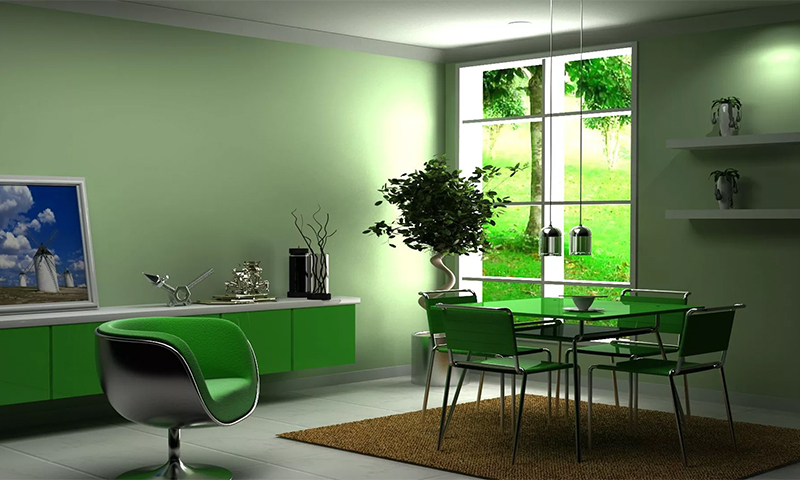
1. If you have just moved into a new building, the walls in the kitchen will shrink for a while. So that the wallpaper does not break and fall off after a year with cracked plaster, take fleece - it is quite capable to withstand such tests.
2. For decoration of the dining area suitable vinyl wallpaper with low or medium moisture resistance - they have a richer choice of patterns. Preference should be given to warm colors that increase appetite.
3. Vinyl wallpaper with hard surface and fiberglass for painting is suitable for the design of the working area, if you decide to abandon the traditional apron or plinth. When buying, be sure to read the pictograms on the label - you need fabrics that are resistant not only to water, but also to cleaning with detergents and brushes.
4. At the stove you can glue non-woven or glass wall paper - they are the most heat-resistant and do not emit any harmful substances when heated. If you take prints with canvas, make sure they have maximum light resistance.
How much are the wallpaper for the kitchen
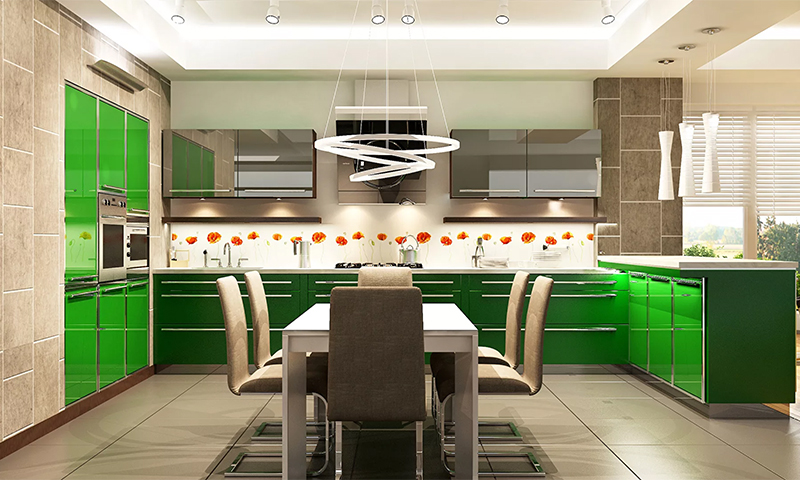
1. Vinyl wallpaper on paper basis can be purchased at a price of 350-400 rubles per roll. Elite collections reach 5-7 thousand. If you choose paintings on non-woven fabric, the minimum cost of a roll will be about 500-550 rubles.
2. Real non-woven wallpapers have an even greater run-up in prices - from 800 to 14,000 rubles per roll.
3. Glass fiber also start from 800 rubles and reach up to 12 thousand. Only here the roll area is not 5, but 50 m2, so compared to non-woven fabric, they are much more profitable.
It will be interesting to friends too






